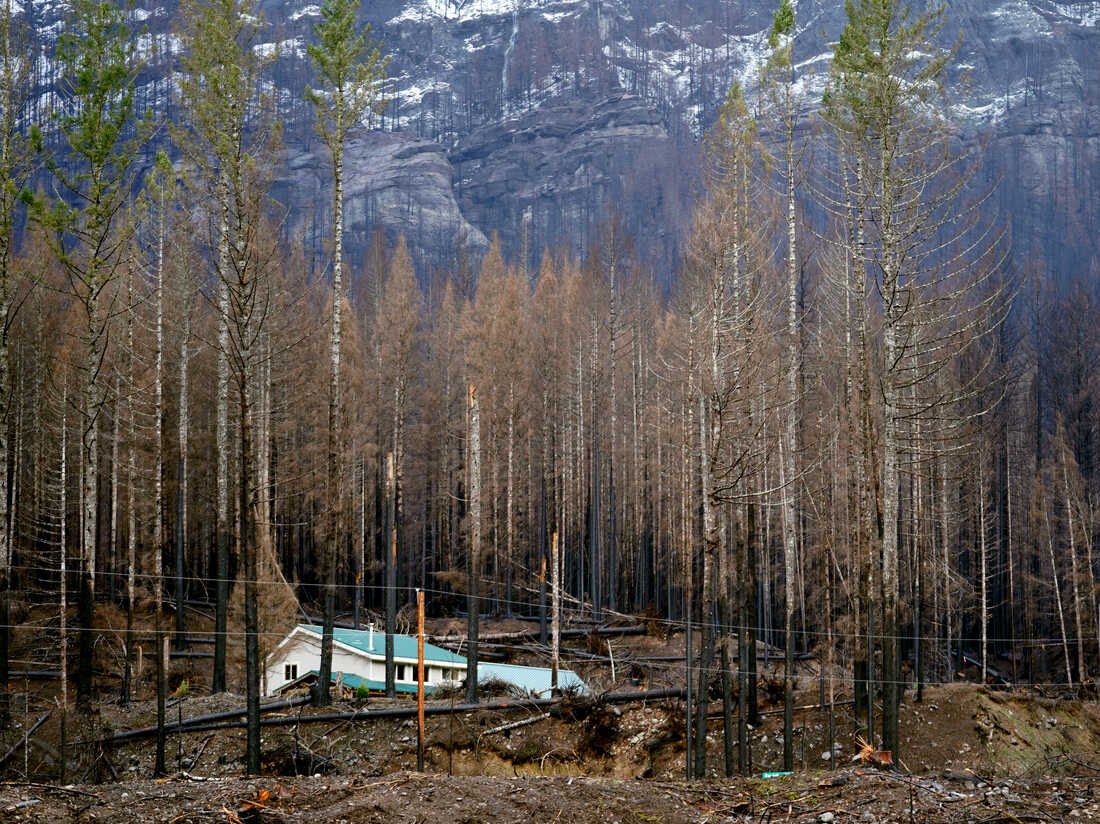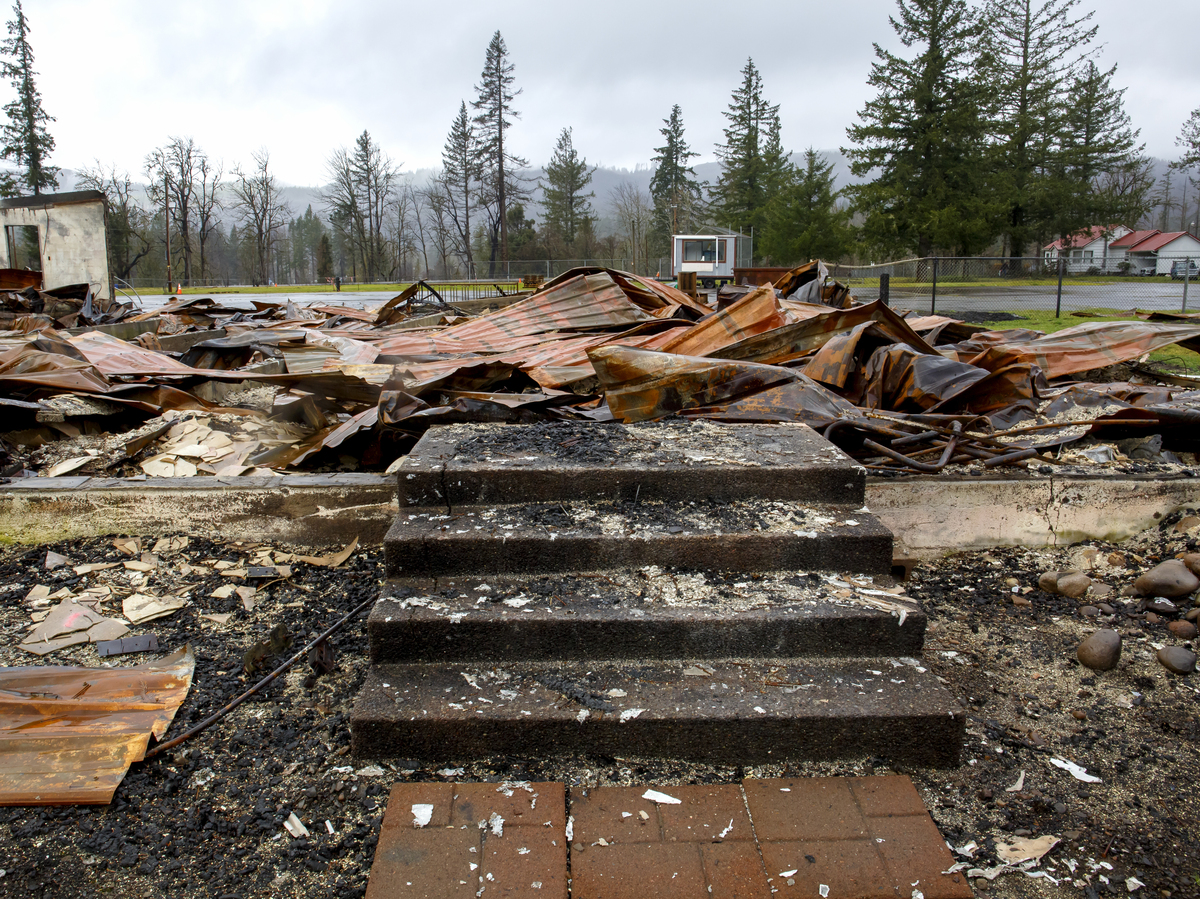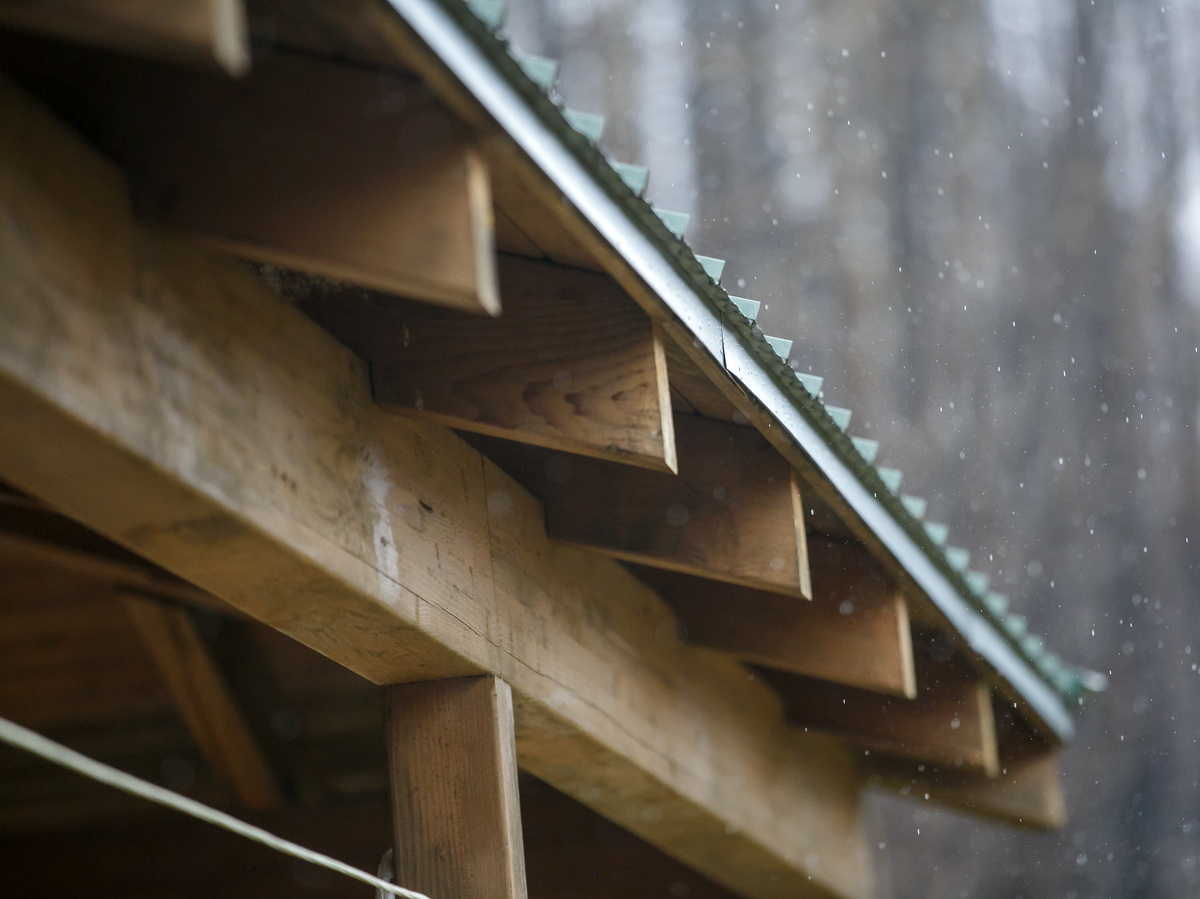
[ad_1]

Mary Bradshaw’s fire-hardened home in Elkhorn, Oregon, on Feb. 26, 2021. It was one of few that survived the Beachie Creek fire in the area.
Kristyna Wentz-Graff/OPB
hide caption
toggle caption
Kristyna Wentz-Graff/OPB

Mary Bradshaw’s fire-hardened home in Elkhorn, Oregon, on Feb. 26, 2021. It was one of few that survived the Beachie Creek fire in the area.
Kristyna Wentz-Graff/OPB
The green metal roof on Mary Bradshaw’s house gleams amid scorched earth and dead, blackened trees. All of the surrounding homes burned in last year’s Beachie Creek Fire in Oregon’s Santiam Canyon, but hers was untouched.
“We were shocked,” Bradshaw said. “Having seen what the fire did, we really didn’t expect it to be standing.”
It’s a shining example of how home hardening measures can prevent houses from burning, even when they’re surrounded by fire. Bradshaw and her husband built their home with concrete siding, a cement porch, no gutters or air vents on the metal roof, and no vegetation near the house. Those are all key fire-proofing measures experts recommend.
“We built it with fire in mind, although we never thought we would have a fire,” Bradshaw said.
Oregon leaders are hoping some of these measures will help save homes from burning in future wildfires as summers in the West get hotter, drier and more fire-prone. But they have been the most controversial part of a sweeping new wildfire protection plan, facing pushback from property owners, and homebuilding and agricultural industries.
In a compromise of sorts, those groups, along with others, will now spend the next year advising state agencies on how to map out the state’s most fire-prone areas, and determine where the home-hardening rules will be required.
Most states don’t require fire-resistant materials
California has mandated wildfire building codes in high risk areas for more than a decade, but it’s an outlier. An NPR analysis last year found most states don’t require rebuilding with fire-resistant materials, and home builders associations have mounted stiff opposition to proposals to do that.
That happened in Oregon when officials first pushed for wildfire building codes several years ago. The Oregon Home Builders Association testified the measures would add substantial cost to a home’s price, even though other assessments found fire-resistant homes would be minimally higher, or even cheaper. The state did approve fire mitigation codes in 2019, but left them optional.
Then last year, raging wildfires in Oregon destroyed thousands of homes and killed nine people.

Remains of the devastation from the 2020 Beachie Creek Fire are evident in the small town of Gates, Feb. 26, 2021.
Kristyna Wentz-Graff/OPB
hide caption
toggle caption
Kristyna Wentz-Graff/OPB

Remains of the devastation from the 2020 Beachie Creek Fire are evident in the small town of Gates, Feb. 26, 2021.
Kristyna Wentz-Graff/OPB
The wave of unprecedented destruction prompted lawmakers to pass a wide-ranging $200 million wildfire bill to prevent another such catastrophe. It also includes more firefighting capacity, expanded forest management plans, and clean air shelters to protect vulnerable people from smoke.
“I don’t think any of us will forget the horror as we saw towns burned overnight, thousands evacuated their homes, leaving behind all of their belongings,” Oregon Gov. Kate Brown said in signing the bill. “We were simply not equipped to fight the fires of this new age, which are faster and more fierce and fueled by the impacts of climate change.”
Sen. Jeff Golden, a Democratic state senator who led the effort to pass the bill, said it’s important to know what parts of the state are most at risk from wildfire and prioritize action in those areas.
“Nobody’s even beginning to think we’re going to eliminate wildfire going forward, but just reduce risks and protect communities,” he said. “We’re fighting for our survival in a very real way, and there’s a lot of trends working against us.”

Mary Bradshaw’s fire-hardened home in Elkhorn has no gutters that could collect flammable pine needles and leaves. There is also no roof vent that could allow in embers, and roofing and siding materials are composite, metal, clay or tile.
Kristyna Wentz-Graff/OPB
hide caption
toggle caption
Kristyna Wentz-Graff/OPB

Mary Bradshaw’s fire-hardened home in Elkhorn has no gutters that could collect flammable pine needles and leaves. There is also no roof vent that could allow in embers, and roofing and siding materials are composite, metal, clay or tile.
Kristyna Wentz-Graff/OPB
Oregon will now map out which places face the highest fire risk
Fire risk maps will have the biggest influence over which areas will see the strictest fire-safe building codes for new construction, Golden said. There will also be requirements for clearing out flammable material around homes.
A key sticking point will come down to defining the so-called wildland-urban interface, where residential areas meet forests and rangelands. It’s the fastest-growing land use type and that, along with the warmer climate, is raising wildfire risk for communities across the country.
“We are looking for a balance between letting people do exactly what they want on their private property and responding to this existential threat,” Golden said.
During the legislative session, critics from real estate, construction and agricultural industries again sounded alarms. They worried broad restrictions would increase costs for property owners, home builders and farmers and infringe on private property rights.
“If Senator Golden thinks for a minute I’m going to cut down the 200-year-old, 200-foot-tall, old growth ponderosa pine in my yard he is mistaken,” Oregon Sen. Betsy Johnson said on a radio show. “I’m just not sure I want unseen, unaccountable, unelected bureaucrats dictating the future of the state of Oregon and how we all are going to live on our own property.”
Opponents of the new rules are on the advisory committees that will help figure out where to require them. They include Mark Long, CEO of the Oregon Homebuilders Association, and Dave Hunnicutt, president of the Oregon Property Owners Association. Hunnicutt worries the rules will not be applied narrowly enough.
“We have a proposed definition of wildland urban interface that will essentially include the entire state of Oregon,” he said.

Aaron Blacklock, left, and Joel Conaway of Oregon’s Wildfire Workforce Corps clear undergrowth in a Eugene community to help reduce the risk of wildfire in the neighborhood, March 30, 2021.
Kristyna Wentz-Graff/OPB
hide caption
toggle caption
Kristyna Wentz-Graff/OPB

Aaron Blacklock, left, and Joel Conaway of Oregon’s Wildfire Workforce Corps clear undergrowth in a Eugene community to help reduce the risk of wildfire in the neighborhood, March 30, 2021.
Kristyna Wentz-Graff/OPB
Meanwhile, a new program has already launched — with $11 million in funding from the new law — to clear flammable brush from the “home ignition zone” in wildland urban interface areas.
Jeff Parker, Executive Director of Northwest Youth Corps, said many communities have natural areas loaded with excess fuel that could send a fire burning faster and hotter toward nearby homes.
His workforce training group usually pays young people to clear weeds or build trails in wilderness areas, but now they’ll be spending more time in neighborhoods, basically doing extreme yard work.
“Our objective here is to… make sure our community has resiliency,” Parker said. “So if a fire does roll through it doesn’t have the catastrophic impact, the mass displacement of people and the impact on the community.”
[ad_2]
Source link




